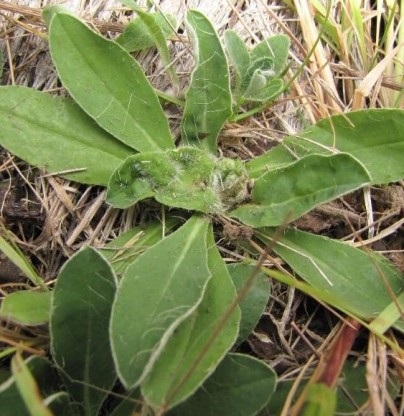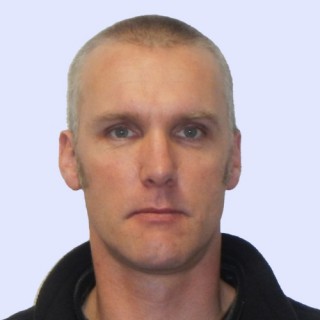Hieracium Biocontrol: Where to from Here?

Gall midge damage
While establishment and spread of these two biocontrol agents has been extensive, particularly for the gall midge in the North Island and the gall wasp in the South Island, impacts leading to a reduction in hieracium cover have only been recorded from damage by the gall midge in the north (percentage cover was reduced by 18%). According to Paul Peterson, who leads the project, the lack of impact by the gall wasp in the South Island appears to be due to a lack of stolons at the drier, more exposed hieracium sites. “Although an average of 67% of stolons are galled by the wasp, only 7% of hieracium plants growing in these environments have stolons, which would severely limit establishment and population growth of the wasp,” explained Paul. “In hindsight, natural enemies that attack the crown or seeds of hieracium may have been more damaging biocontrol agents,” he added. Although the gall midge does attack the crown of hieracium plants, it has not established well in the South Island, apparently performing better at wetter, less exposed sites more commonly found at North Island hieracium sites.
Given the limited impacts of the hieracium biocontrol agents, new genotypes of the gall wasp and gall midge, or larger releases of the agents that failed to establish, or new biocontrol agents altogether, may help improve control levels of hieracium in New Zealand. However, before embarking on native range surveys for new agents, it was important to establish the origins of the hieracium species in New Zealand, and to determine whether new forms (genotypes) are present so that we know where to focus our search.
In 2004 a DNA study by Trewick and colleagues found that the majority of mouse-ear hawkweed (Hieracium pilosella) samples in New Zealand consisted of only two haplotypes, which indicated this species is primarily reproducing asexually (via parthenogenetic seed), and that it most likely originated from Eastern Europe rather than the United Kingdom, as was originally thought. This same DNA analysis was recently repeated on hieracium samples collected in 2021 from some of the same sites that Trewick originally sampled in the early 2000s. “We also collected samples from areas of rapid spread of hieracium to help understand which mouse-ear hawkweed genotypes are driving the range expansion,” explained Paul. “The results corroborated findings from the 2004 study and provided confirmation that new forms of mouse-ear hawkweed are not present in New Zealand”.
However, the existing forms of mouse-ear hawkweed, the worst invasive hawkweed species in New Zealand, may still have some capacity for sexual reproduction, which would increase genetic diversity. “Breeding systems in hieracium are very complicated,” said Gary Houliston, who is part of the molecular research team. “Consequently, the best way to ensure that potential biocontrol agents found in Eastern Europe will attack our hieracium is to test New Zealand plant material in feeding trials,” he added. Interestingly, a Mackenzie Basin farmer, Gavin Loxton, who has had significant input into the project, suggests that if plantings of New Zealand hieracium seeds conducted alongside motorways in Germany in the 1990s and 2000s yielded long-lived populations, it would be an ideal place to initiate the search for agents adapted to New Zealand hieracium.
Although there are a number of promising options available to boost the biocontrol effort against hieracium in New Zealand, any further work will be dependent on continued support for the programme. The land tenure review process has resulted in areas of previously unmanaged land becoming intensively managed. This has resulted in the exclusion of hieracium, independent of the impacts of biocontrol, due to irrigation, cultivation and fertilisation. Therefore, 20 years on, concerns over hieracium management have shifted towards the last remaining unmanaged land areas, including the conservation estate. End-user interest in funding further biocontrol research for these areas would need to be reassessed.
This project was funded by AgMardt.
Contact

